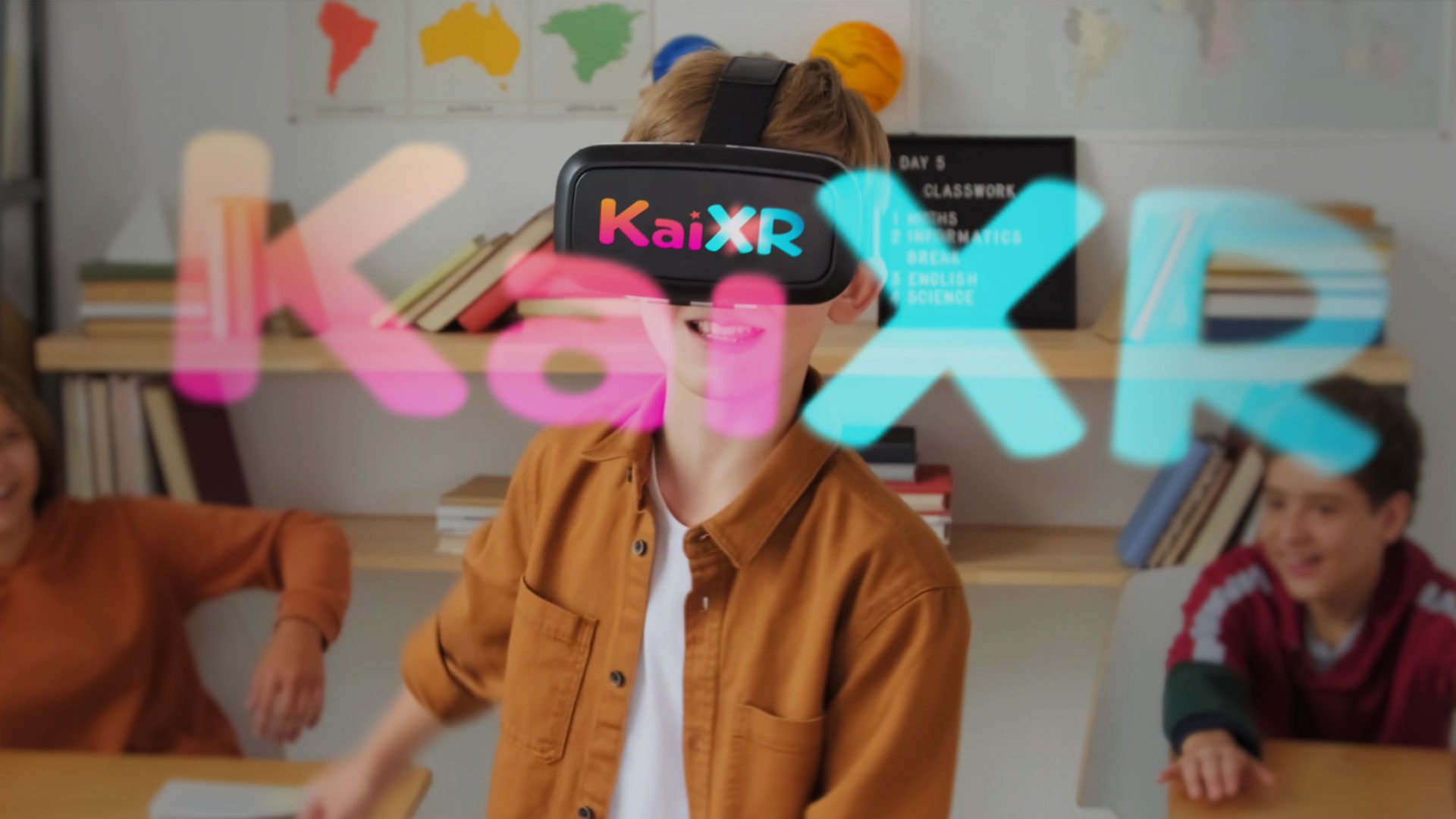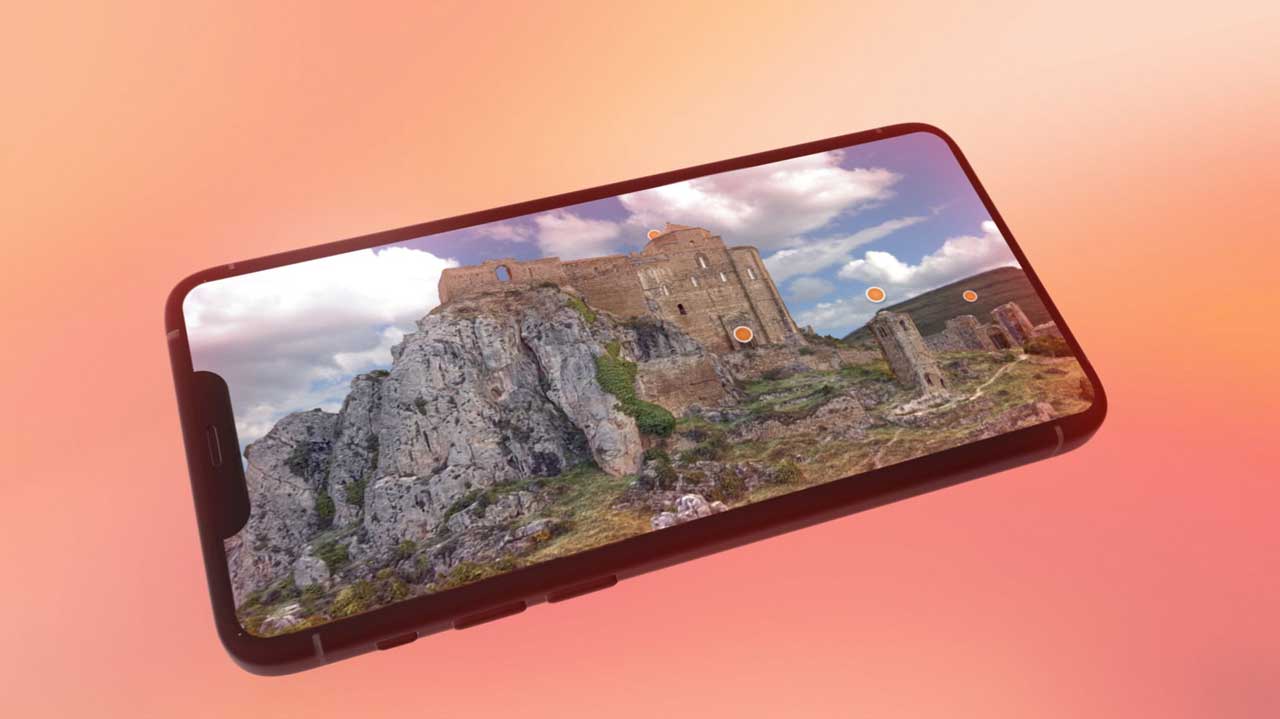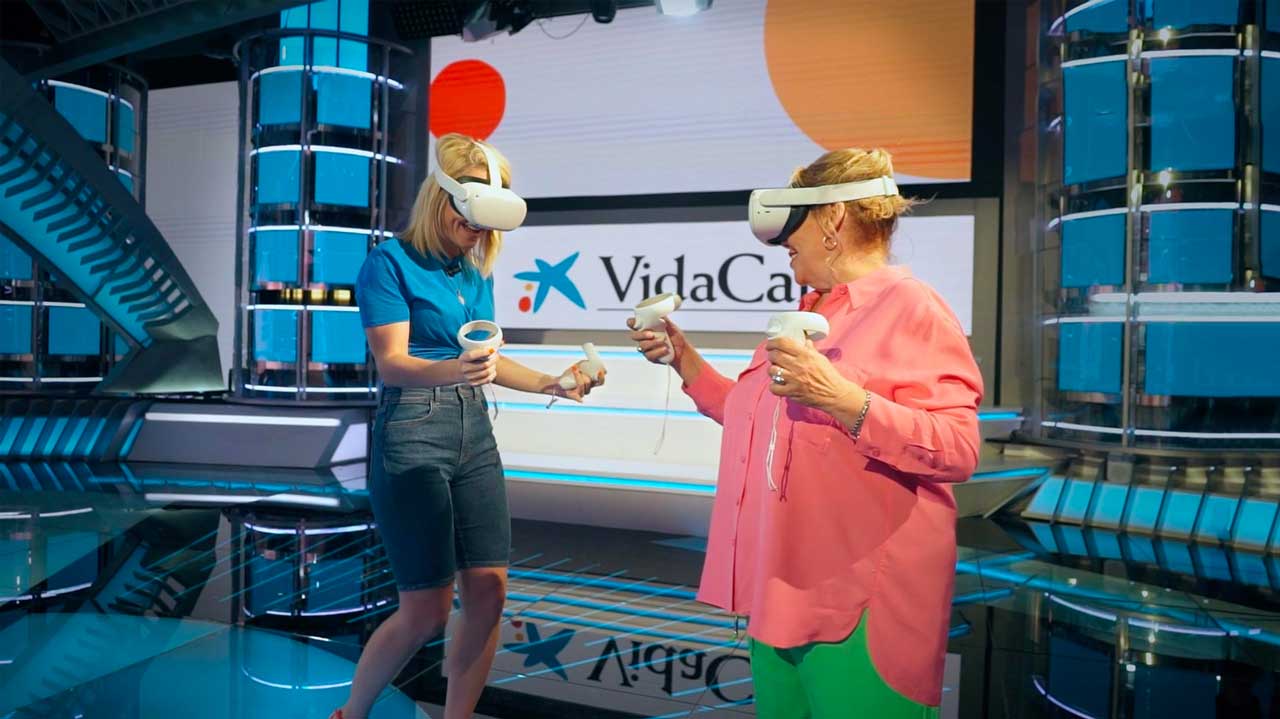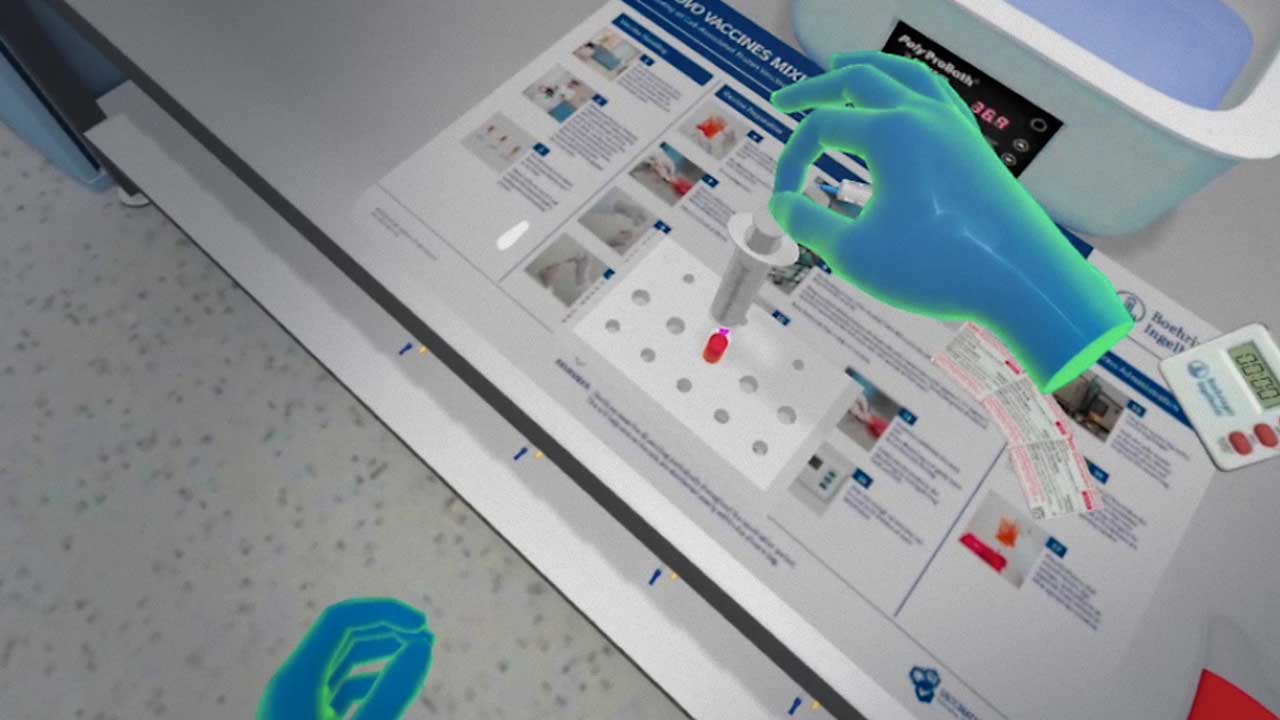What is Extended Reality?
What is Extended Reality?
The Extended Reality The same concept encompasses the Augmented Realitythe Virtual Reality and the Mixed Reality. This technology refers to all the innovative solutions that combine the characteristics of each of these immersive realities including, in addition, its complementation with the Artificial Intelligencethe 5G or the Internet of Things (IoT).
Each type of XR is differentiated as follows:
- Virtual Realitytechnology capable of immersing users in virtual environments artificially generated, blocking out the real world to place them in completely digital locations.
- Augmented RealityThe 3D virtual world: unlike the previous one, it does not block the real world, but "augments" it by superimposing 3D virtual objects.
- Mixed Realitytechnology where not only digital elements are superimposed on the real world, but also can be interact with them, change their size and position, thanks to the Mixed Reality glasses that recognize both the real environment and the movement of the hands.
Extended Reality Applications
Extended Reality has revolutionized multiple sectors, offering a variety of applications that transform the way we learn, work, travel, shop, connect with brands, entertain ourselves and even take care of ourselves. From education to medicine to tourism, retail, marketing and entertainmentthese immersive technologies have opened up a range of possibilities that have changed the way we interact with the world..
Application in the education sector
Extended Reality means that, more than ever, we put learning by doing into practice, turning the way we are used to learning upside down. The immersion that these technologies offer opens up a new range of educational experiences that facilitate knowledge retention and increase learner interest.
Instead of viewing photographs on projectors, three-dimensional models of outer space, body parts, or even historical moments can be shown as if they were in the classroom itself.
These technologies also break the barriers of distanceand may attend at first hand to training anywhere on the planet through Virtual Reality, focusing attention exclusively on this immersive educational world. A tangible example can be found in the international Kai XR project. A platform for virtual reality where children can live immersive experiences dedicated to science, technology, sports... The latest in educational innovation.
Kai XR Platform International Project
2. Application in the business and industry 4.0 sector.
The inclusion of the XR in the industry represents an important step towards revolution in monitoring, training, error correction and decision making with simulations and 3D prototypes developed with the highest level of detail. Thanks to the union of these immersive technologies with the Internet of Things (IoT)The ultimate human-machine communication, accurate and in real time, is a reality, by superimposing notifications, diagrams and videos on top of the machinery. In more corporate environments, the ability to create virtual spaces from scratch offers new perspectives for HR departments, as they are able to develop immersive and gamified experiences to analyze the skills of workers and candidates.
These technologies also make it possible to create business spaces in which to socialize and work together, both in large events and private meetings. All in first person and through avatars as in the Rafa Nadal Academy by Movistar. In which 100 journalists from all over the world were given exclusive access to learn about the Metaverse of the sports center first hand and with the avatar of your choice.
Rafa Nadal Academy by Movistar Extended Reality Project
3. Applications in the tourism sector
If there is a sector where live unique experiences is the basis of the business this is the tourism sector. And thanks to Extended Reality these experiences can be much more immersive, authentic and personalized.
Providing great value and engagement before, during and after the trip, the stay or the tourist activity. Recreate historical events, translations in real time, virtual guides based on artificial intelligenceEverything to change the way we live and discover all that museums, hotels and monuments have to offer.
Monuments such as the Loarre CastleThe best-preserved medieval fortress in Europe now has its own virtual version thanks to the project Loarre XR. A 3D web space immersive where experiences have been developed in Virtual Reality, 360º photography and digital gymkhanas on the castle.
Augmented Reality Project Loarre XR
4. Application in the retail sector
In the sector retail and e-commerce these immersive technologies offer the possibility of creating more innovative and interconnected shopping experiences. From converting web pages into much more intuitive virtual stores, to being able to offer in the same physical space additional information about the garments (price, availability, colors and even place orders instantly) with the superimposition of digital elements.
A series of innovations that improve the user experienceThe result? A series of immersive experiences such as the one developed by Prosegur and Movistar Alarms where through a Augmented Reality App and QRs in the physical stores, it is possible to see the different models in operation and obtain information about their services through an interactive virtual house that fits in the palm of a hand.
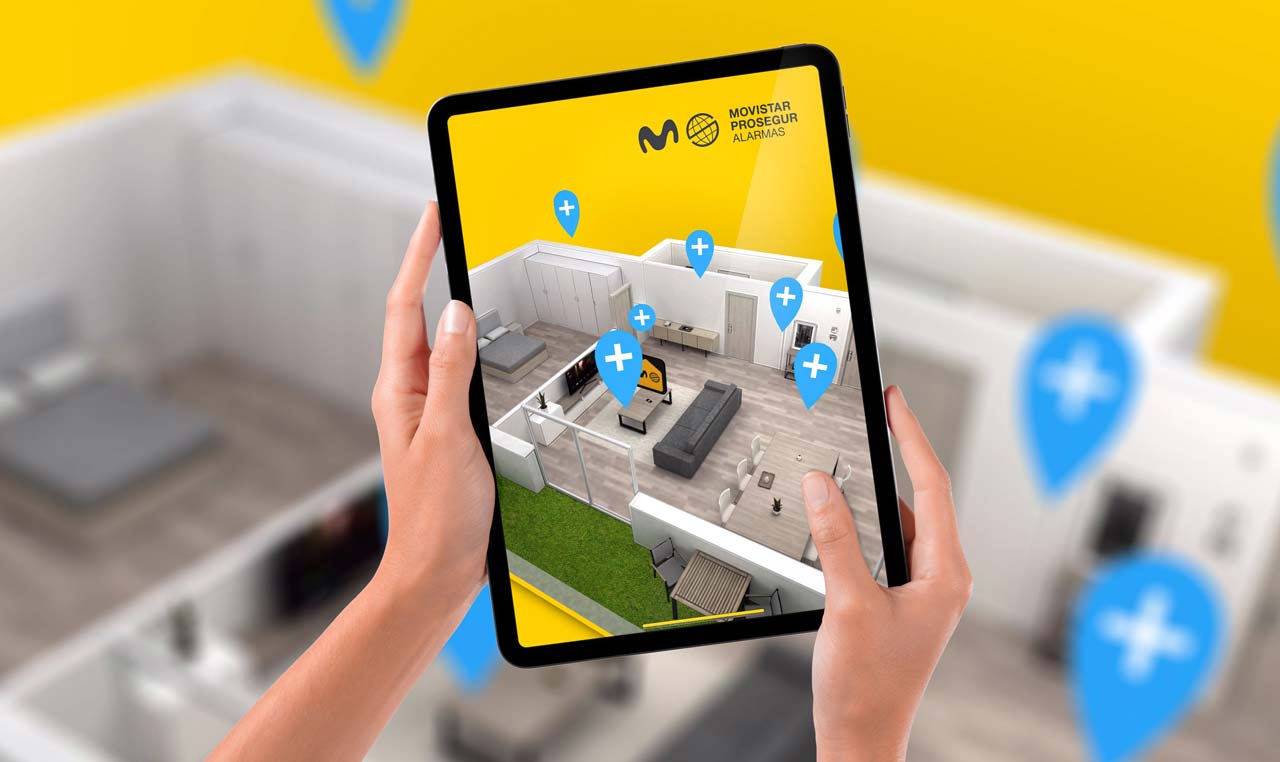
Augmented Reality App by Prosegur and Movistar Alarms
5. Marketing and advertising applications
Extended Reality technologies have become the most widely used new showcase and communication channel for companies. All thanks to its immediacy, convenience, interactivity and personalization. These characteristics open up a new range of possibilities for the marketing, advertising, branding and brand positioning.
These technological solutions are aimed at immersing users/customers in new experiences. interactive and gamified The Virtual and Augmented Reality become the ideal tools to amplify the engagement and emotional connection with the target audience. A tangible example of these immersive experiences can be found in the project Frozen Emotion by Ibercajain which through virtual glasses and a physical and digital suspension bridge, users traveled to the top of the Aragonese Pyrenees to discover the new features of the ski season, only if they managed to cross the bridge and overcome the vertigo!
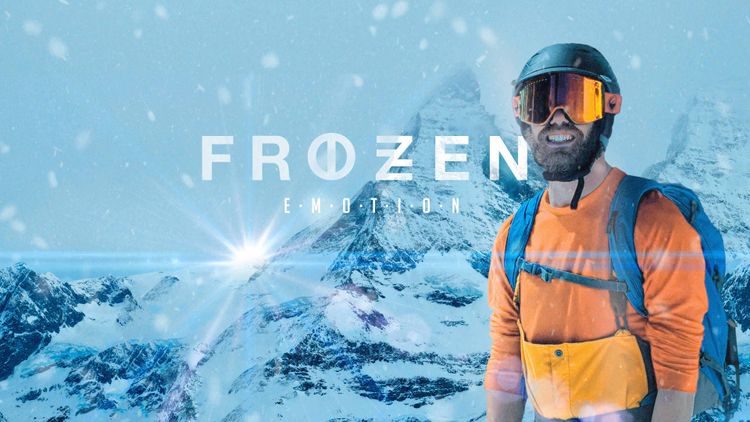
Ibercaja's Frozen Emotion Virtual Reality Project
6. Entertainment applications
Extended Reality applied to cinema, big shows, theme parks, sporting events and video games, takes the immersion of the audience to its maximum expression. Moving from storytelling to storylivingfrom being mere spectators to be part of the action. Accessing new angles, seeing additional overlay information and enjoying a complete sensory experience with special effects and animations to develop live shows.
Theme parks will feature, thanks to Extended Reality, virtual technology to immerse attendees in more elaborate and fantastical worlds creating breathtaking experiences. And even the animated characters will cross the digital borderinteracting with the real world as if they were part of it. One project that reflects all of these new opportunities for entertainment is The Twists and Turns of Life of Movistar + and VidaCaixa. Where users can not only enter the set where the first filming has taken place in the Metaverse, they can also enjoy mini-games and exclusive content as another character!
Filming for the Virtual Reality project "Las Vueltas que da la Vida" (Movistar and VidaCaixa).
7. Applications in the health sector
Technology and medicine have never been more interrelated. Now, technological advances applied to the healthcare sector are focused on the new Extended Reality tools that represent a revolution for different healthcare fields. Such is the case of training of health professionalswith the development of virtual simulations where to practice that do not affect the real world. Or the possibility of studying 3D models of the human anatomy in an easier and more precise way. A precision that can also be transferred to surgical operations, with the possibility of obtain instant information while the patient is being operated on by connecting all the devices in the room to the Augmented Reality glasses.
With these immersive technologies, it is also possible to improve therapy and treatments by transporting patients to other virtual worlds. At the same time, it makes the hospital stay more bearable, especially for the youngest patients. An example of these XR solutions in healthcare can be found in the virtual training developed for Boehringer Ingelheim on the development of its latest products.
Advantages of Extended Reality
As we have seen, XR has diverse applications in the business world, offering a series of advantages for each type of sector that involve revolutions at the level of internal processes, customer experience, and knowledge retention at the educational level. We can summarize its advantages in these points:
Facilitates knowledge retention
The development of this type of solutions allows the introduction of video game elements to the industrial, business and educational environment. Changing the way of working with more complex activities attractive and customized.
2. Eliminate the distance barrier
Thanks to the incorporation of these technologies in the business sector, the processes are increasingly fast and efficient. As a large number of operations expand and distribute geographically, Extended Reality helps overcome the problems caused by distance.
3. Improved learning
Extended Reality involves a great revolution for education and training, both at school and business level. Enabling learning to be more effective active and autonomous and facilitating the development of key skills with more attractive training.
4. New communication channel
Extended Reality (virtual, augmented and mixed reality) with the Metaverse as the main avenue of expansion are going to become a new way of interaction with users/customers. With the big difference that in this Web3 communication will be more humanized, intuitive and immersive. With virtual spaces that go beyond static web pages.
Extended Reality Challenges and How to Address Them
Extended Reality has significant potential and offers numerous opportunities in various fields. However, it also poses challenges that need to be addressed to make the most of their technological advantages.
Because XR is a relatively new technology, there can be limitations in terms of high development costs, technical complexity and the need to integrate it effectively with a company's existing systems.
To determine the feasibility of implementing Extended Reality in a specific company, it is advisable to consult experts to evaluate the best extended reality options tailored to the needs of the business. In addition, it is important to consider the optimal way to integrate XR with existing systems, thus maximizing the technology benefits and ensuring that they fit within the company's current budget.
At ImasconoWe address the challenges of Extended Reality for businesses by providing technical expertise, affordable solutions, support and training, and a creative approach to experience design. Our goal is to help companies overcome barriers and take full advantage of the benefits of XR in its operations and customer service.
Our experts will be happy to answer all your questions and discuss how we can adapt our Extended Reality solutions to the specific needs of your project.Contact with us and we will take your project to infinity and beyond!

